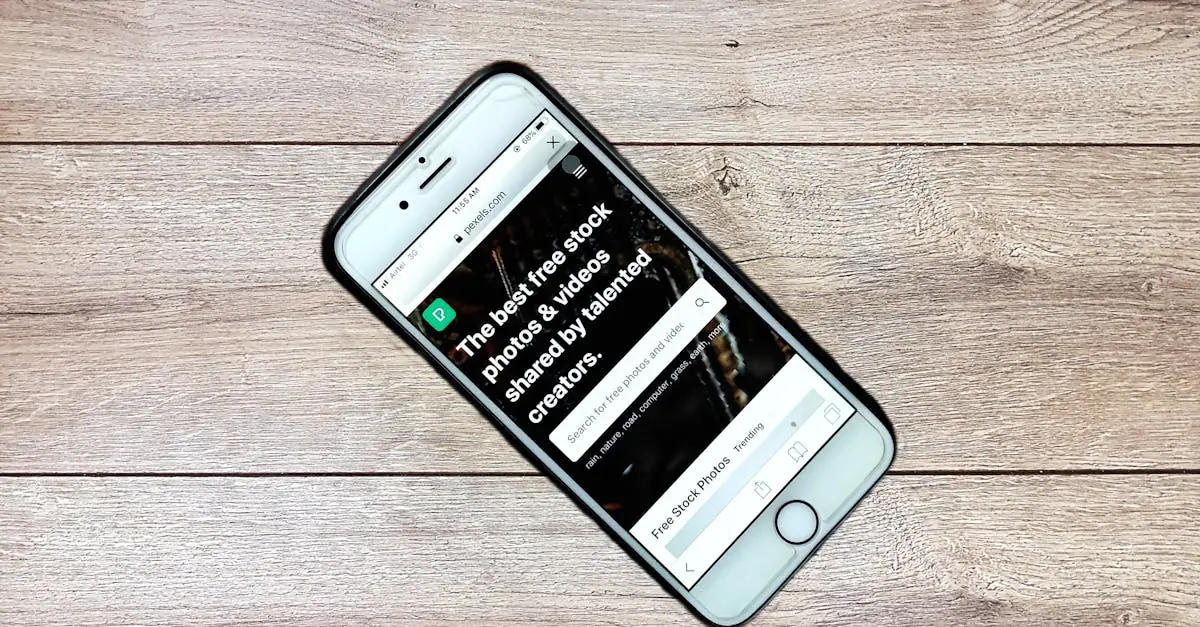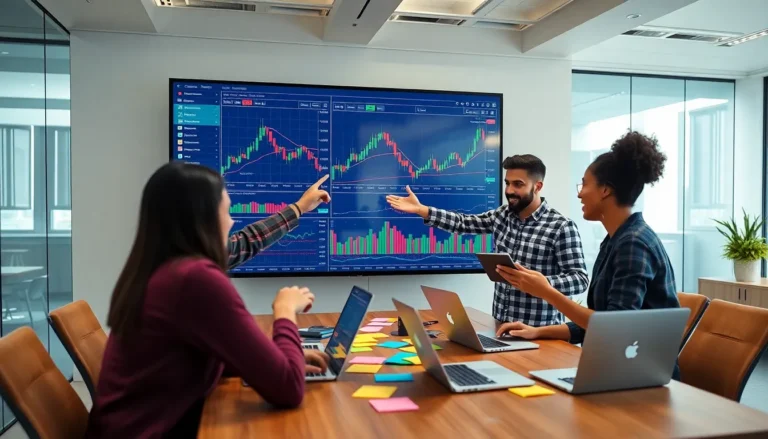In a world where multitasking is the new superpower, keeping track of open apps on a phone can feel like herding cats. One moment, you’re scrolling through social media, and the next, you’ve accidentally opened a dozen apps that are all vying for your attention. It’s a digital circus, and you’re the ringmaster trying to keep the show running smoothly.
Table of Contents
ToggleUnderstanding Open Apps On My Phone
Managing open apps on a smartphone influences multitasking efficiency. Users often juggle several applications simultaneously, leading to potential distractions and confusion.
What Are Open Apps?
Open apps represent programs actively running on a smartphone. These include social media platforms, messaging services, and productivity tools. All applications in this state remain accessible, allowing users to switch quickly. Background tasks, such as updates or notifications, also occur within these apps. When a user taps on an app icon, it brings that application to the foreground, making interactions seamless.
How Apps Remain Open
Apps stay open due to a feature known as multitasking. Operating systems like Android and iOS manage resources by allowing multiple applications to run simultaneously. Caches and memory optimize performance, keeping apps readily available. Most smartphones maintain a list of recently used apps, enabling quick access without full reloading. Additionally, background processes continue to run while users interact with other applications, preserving user experience.
Managing Open Apps
Managing open apps is crucial for a smooth smartphone experience. Users can maximize efficiency when navigating between multiple applications.
Ways to Open Apps on My Phone
Users can access apps in various ways. Tapping the app icon on the home screen launches it instantly. Alternatively, swiping up from the bottom of the screen reveals the app drawer on both Android and iOS devices, showcasing all installed applications. Voice assistants like Siri and Google Assistant enable users to open apps using voice commands. Another option involves checking the recent apps menu, which lists previously used applications for quick access.
Closing Apps Efficiently
Closing apps efficiently prevents unnecessary resource use. Swiping up or tapping the overview button displays all open applications. Users can then swipe away the apps they want to close. Holding an app icon on Android brings up a menu that includes a “Close” option, allowing for quick action. For iOS, pressing and holding an app in the recent apps section reveals a red minus sign to terminate it. Regularly closing unused apps improves overall device performance and battery life.
Benefits of Using Open Apps
Utilizing open apps on a smartphone enhances user experience notably. Efficient multitasking yields significant advantages.
Multitasking Advantages
Multitasking allows users to perform various tasks simultaneously, increasing overall productivity. Switching seamlessly between apps helps streamline workflows. When users access a messaging app and a calendar simultaneously, they coordinate tasks efficiently. Open apps facilitate quick transitions, reducing downtime between activities. Featured multitasking capabilities in operating systems optimize resource management. This means users can work with multiple apps without noticeable lags. Increased efficiency results in more tasks completed in shorter timeframes.
Immediate Access to Information
Immediate access to information improves decision-making processes. Users can retrieve crucial data from open apps like email or navigation tools quickly. Keeping multiple apps accessible ensures reliability when time-sensitive information arises. Open apps also enable faster responses to notifications and updates. This accessibility fosters a sense of control over tasks. Furthermore, users experience less interruption while staying informed and engaged. Overall, the ability to switch between several applications directly enhances daily operations.
Common Issues with Open Apps
Open apps present various challenges that can affect smartphone performance. Managing them effectively remains crucial for ensuring an optimal user experience.
Performance Impact
Performance issues often arise when too many apps remain open. Apps running in the background can consume system resources, causing slower response times. Users may notice lag during app navigation or multitasking if the device’s memory is strained. Memory limitations play a significant role, as each application utilizes a portion of available RAM. It’s essential to monitor active apps to maintain a smooth operation. Closing unused apps frequently not only frees up memory but also enhances overall device speed, facilitating efficient transitions.
Battery Consumption
Battery consumption increases when multiple apps remain open. Background processes can drain the battery faster, especially for resource-heavy applications like games or video streaming services. Users might experience rapid battery depletion due to the power demands of these active apps. Power management features in smartphones can help, but excessive open apps often counteract these efforts. Keeping an eye on battery usage statistics offers insights into which apps consume the most power. Regularly closing unnecessary apps contributes to longer battery life, ensuring the device remains usable throughout the day.
Managing open apps on a smartphone is essential for maintaining efficiency and enhancing user experience. Users can significantly improve their multitasking capabilities by regularly closing unused applications and optimizing resource management. This not only boosts device performance but also extends battery life, ensuring that smartphones remain reliable throughout the day.
By understanding the benefits and challenges of open apps, users can navigate their digital environment with greater ease. With effective management strategies in place, multitasking can become a seamless part of daily life, allowing for quicker responses and more productive workflows. Embracing these practices will ultimately lead to a smoother and more enjoyable smartphone experience.





